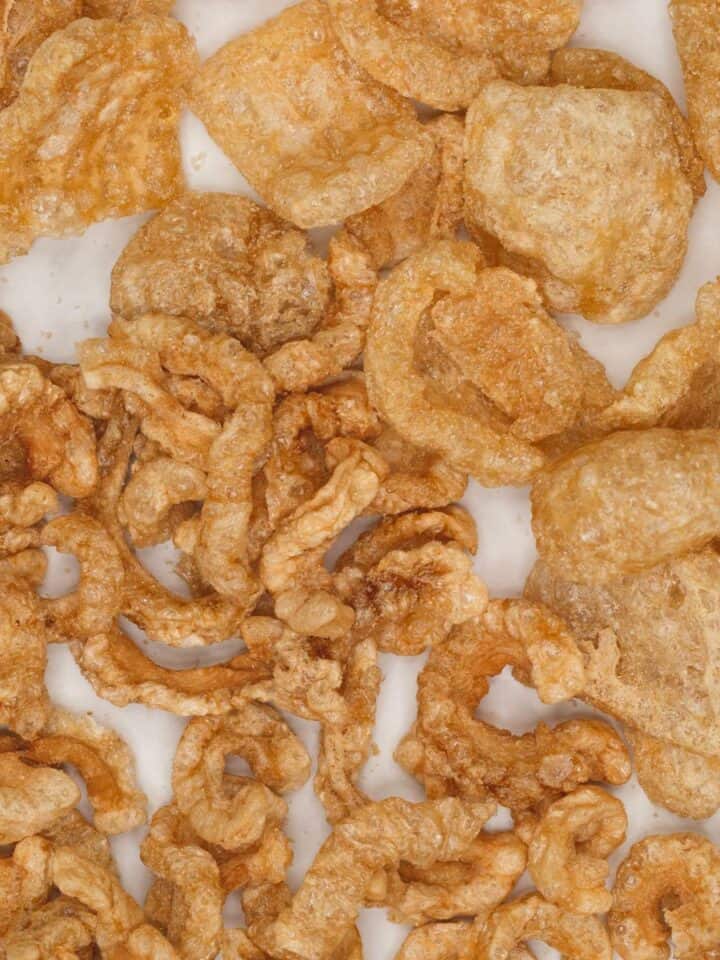Macapuno, often referred to as "coconut sport," is a special variety of coconut native to the Philippines. It has a jelly-like, translucent flesh, which is much thicker and sweeter than regular coconuts.

Jump to:
What is macapuno?
Macapuno trees are not typical; they result from a naturally occurring genetic condition in coconut palms. This condition causes the coconut to develop without the usual clear liquid (known as coconut water) inside. The interior is filled with a rich, sticky, and dense white flesh and a thick, syrupy substance.

What does macapuno taste like?
Macapuno is sweeter and more flavorful than regular coconut meat. It's a richer, creamier version of traditional coconut, with a gelatinous texture and an almost custard-like consistency.
What is the difference between regular coconut and macapuno?
Regular coconuts and macapuno may look the same on the outside, but differ in taste and texture. Regular coconuts contain mildly sweet meat and clear, slightly acidic liquid that is drinkable.
In contrast, macapuno is a unique coconut variant with a softer, jelly-like texture caused by a genetic mutation. It may contain a thick syrup, if any liquid at all. The shell of a macapuno coconut is tougher, and the inside is brimming with dense, custard-like meat.

Where can you find macapuno?
Macapuno products can be found in Filipino specialty stores worldwide. Fresh ones may be harder to come by outside the Philippines. However, macapuno strings and preserves can be easily found in jars or bottles, a convenient way to include them in your recipes.

How is macapuno harvested and prepared?
Macapuno coconuts come from special coconut trees known for producing this unique variant. Unlike regular coconuts, when you shake a macapuno coconut, it doesn’t make the typical sloshing sound because of its dense, gelatinous interior.
These coconuts are known for their tough shells that are harder to crack open. Inside is dense, creamy flesh and a thick syrup, which is significantly different from the watery content of standard coconuts.
This flesh is scooped out and typically processed into products like jams or strings. The tree yields less fruit and is harder to harvest and prepare, making it a rare and valued ingredient in Filipino cuisine.

Macapuno in Filipino Cooking
Macapuno is an ideal ingredient for adding a luxurious, sweet coconut flavor to desserts. Here are some ways to use it:
- Halo-Halo: A refreshing dessert made with crushed ice, various fruits, tubers, sago, jellies, and sweet beans. It is topped with pinipig, Leche Flan, ice cream, and drizzled with evaporated milk.
- Macapuno Ice Cream: Creamy and rich ice cream made with coconut milk and sweet macapuno.
- Ube Macapuno Ice Cream: A creamy and indulgent treat, flavored with ube (purple yam) and macapuno.
- Macapuno Tarts: Small pastries filled with sweet macapuno jam.
- Macapuno Balls: Small, round confections made with sweetened macapuno, often coated in sugar or desiccated coconut.
- Ube Macapuno Cake: A moist, vibrant purple yam cake layered with sweet macapuno filling.

Other ingredient guides you may like

Did you like this post? I would love to know! Your feedback helps me make better recipes. Please rate, review, or comment below. Questions about this post are welcome, too!
Let's connect on Facebook, Instagram, Pinterest, TikTok, Twitter, and Youtube. Be sure to tag me when you try any of my recipes @recipesbynora!











Mark
My first time seeing macapuno in the shell. Amazing.
Nora Reyes
Amazing, isn't it?